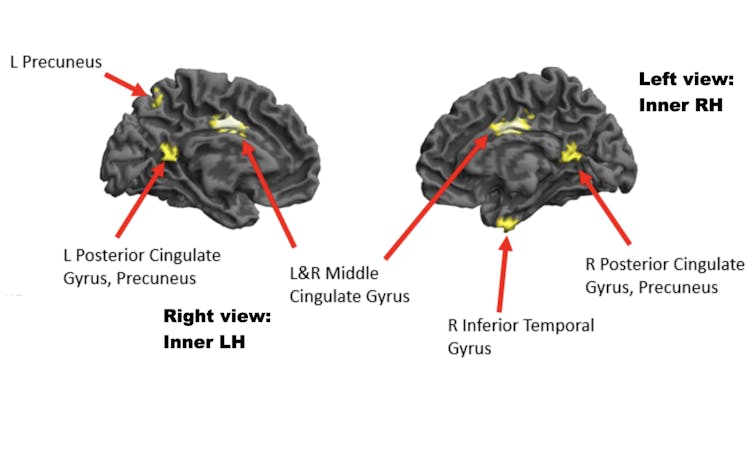By JustMarkets
At Monday’s close, the Dow Jones Index (US30) added 0.17%, while the S&P 500 Index (US500) was down 0.21%. The NASDAQ Technology Index (US100) closed negative 0.12% yesterday. The Fed’s hawkish comments on Tuesday pushed 10-year T-note yields to a 5-month high and negatively impacted equities. The US Fed Chairman Jerome Powell said yesterday that given the strength of the labor market and progress on inflation so far, it is appropriate to give restrictive policy additional time to work. In addition, Fed Vice Chairman Jefferson added that if incoming data indicate that inflation is more resilient, it would be appropriate to maintain the current restrictive policy for a longer period. Currently, markets expect only 40 basis points of easing from the Fed this year, down significantly from 160 basis points at the beginning of the year. Markets are pricing in the chances of a rate cut of 25 bps. Up to 3% will be at the next FOMC meeting on May 1, and 20% will be at the June 12 meeting.
Geopolitical risks in the Middle East continue to weigh on equities amid concerns that Israel will retaliate after Iran fired a barrage of rockets and drones at Israel over the weekend. Israel’s military cabinet postponed a meeting scheduled for Tuesday to decide on retaliatory measures.
The International Monetary Fund raised its 2024 global GDP forecast to 3.2% from its January forecast of 3.1%.
Equity markets in Europe mostly went up yesterday. Germany’s DAX (DE40) fell by 1.44%, France’s CAC 40 (FR40) closed down 1.40%, Spain’s IBEX 35 (ES35) lost 1.50%, and the UK’s FTSE 100 (UK100) closed negative 1.82% on Tuesday.
German economic growth expectations in the ZEW survey rose by 11.2 to a two-year high 42.9, beating expectations of 35.5. ECB President Lagarde said yesterday that unless there are major shocks to developments, the ECB is approaching a point where the bank will have to moderate its restrictive monetary policy. Lagarde also added that this will likely happen in a fairly short period. ECB Governing Council representative Makhlouf provided more specificity, saying that the ECB could cut interest rates at its next meeting in June if the upward trend in inflation continues. Swaps put the odds of a 25 bps ECB rate cut at its next meeting on June 6 at 87%.
WTI crude futures fell as low as $85 a barrel on Wednesday, declining for the third consecutive session. Economic uncertainty in China, a major oil importer, and a delayed US interest rate cut weighed on the demand outlook. However, given tensions in the Middle East and considering OPEC+ production cuts, the overall fundamental backdrop points to further gains in oil prices.
Asian markets were predominantly down yesterday. Japan’s Nikkei 225 (JP225) was down 1.94%, China’s FTSE China A50 (CHA50) lost 0.40%, Hong Kong’s Hang Seng (HK50) decreased by 2.12% and Australia’s ASX 200 (AU200) was negative 1.81%.
The New Zealand dollar rose to $0.59 after data showed that the country’s inflation rate eased to 4% y/y in the first quarter, the lowest since June 2021. The reading matched economists’ expectations but exceeded the Reserve Bank of New Zealand’s (RBNZ) forecast of 3.8% y/y. Earlier this month, the RBNZ kept the rate unchanged for the sixth consecutive meeting as policymakers sought to further ease capacity and inflation pressures despite data pointing to weakening economic activity.
Japan posted a trade deficit for the third consecutive fiscal year as the cost of energy and other imported goods rose and the yen remained weak.
Westpac forecasts Australian GDP growth to remain modest at 1.6% in 2024, down from a soft 1.5% a year earlier. This is well below Australia’s “trend” growth rate of around 2.5%.
S&P 500 (US500) 5,061.82 −61.59 (−1.20%)
Dow Jones (US30) 37,735.11 −248.13 (−0.65%)
DAX (DE40) 18,026.58 +96.26 (+0.54%)
FTSE 100 (UK100) 7,965.53 −30.05 (−0.38%)
USD Index 106.35 +0.14 (+0.13%)
- – New Zealand Consumer Price Index (q/q) at 01:45 (GMT+3);
- – Japan Trade Balance (m/m) at 02:50 (GMT+3);
- – UK Consumer Price Index (m/m) at 09:00 (GMT+3);
- – UK Producer Price Index (m/m) at 09:00 (GMT+3);
- – Eurozone Consumer Price Index (m/m) at 12:00 (GMT+3);
- – US Crude Oil Reserves (w/w) at 17:30 (GMT+3);
- – UK BoE Gov Bailey Speaks at 19:00 (GMT+3).
By JustMarkets
This article reflects a personal opinion and should not be interpreted as an investment advice, and/or offer, and/or a persistent request for carrying out financial transactions, and/or a guarantee, and/or a forecast of future events.









.png)

 Article by
Article by 


